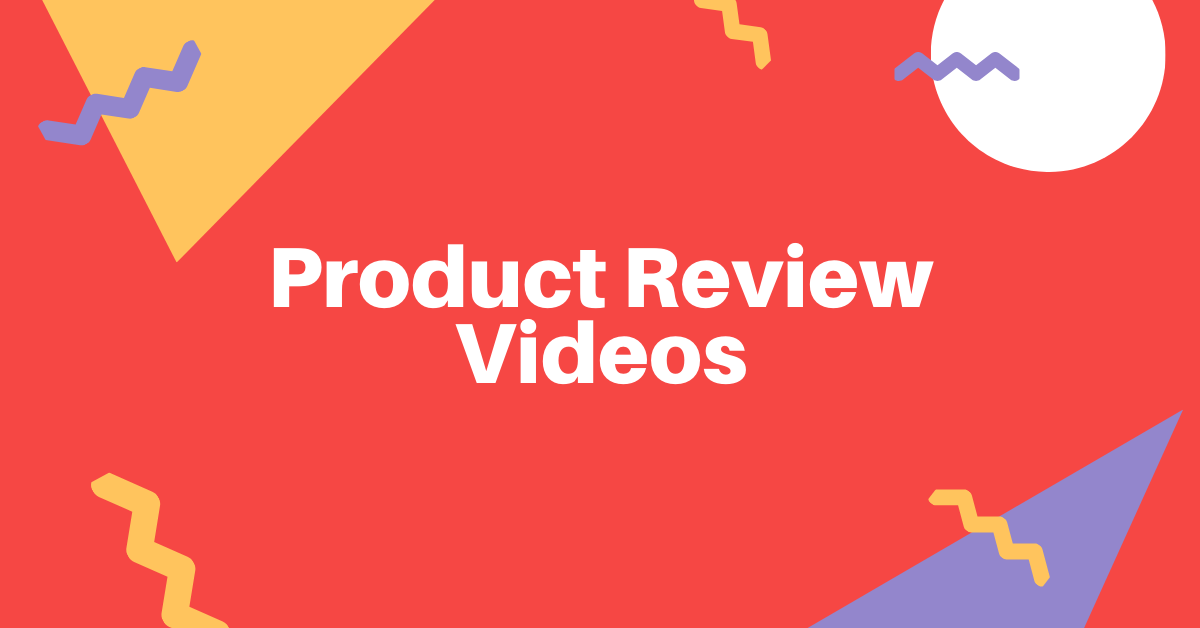Contents
Create an Ideal Customer Profile
Make Sure Your Customers Can Pay
Have a Well-Thought-Out Sales Process in Place
10 Trending Tips for Sales Prospecting
"Ugh, sales prospecting. Don't get me started on sales prospecting!". That's probably the most common reaction you'll get when asking a person working on a marketing team about their sales prospecting strategies.
Indeed, sales prospecting is a major sore point for any marketer across any given industry.
Drawing customers in is hard, and closing deals is even harder. Not only that, but people are very reserved nowadays, and potential customers tend to resent salespeople, even if they're just doing their jobs.
In fact, up to 50% of prospects feel like salespeople are too pushy, according to 2021 HubSpot's survey.
In this article, however, we will give you 10 modern tips and tricks on how to make your sales prospecting successful while reducing your "pushiness factor" to a minimum! Let's check them out!
Create an Ideal Customer Profile
Here's the thing - businesses often don't know how to target their audience. Many sales teams try to cover all their bases, but in doing so, they stretch themselves too thin, and they don't manage to cover any of them.
What you need to do as a marketer creates an ideal customer profile. Look at your previous contacts and your previous customers. If you're new and don't yet have any, look to your industry's peers.
Try to ascertain who is the right person for your product. Who needs your services the most? Who will benefit from partnering up with you?
If your prospect answers positively to all of these questions, if they meet all the criteria, that's your ideal customer! Try focusing on them instead of casting a net into the ocean and hoping for the best.
Ultimately, if you narrow down your niche and follow proven sales tips, you'll not only be able to obtain more customers, but you'll be able to create a loyal following.
Sometimes, a recurring customer is even better than a new one, as they tend to spend up to 33% more than new customers.

Make Sure Your Customers Can Pay
This statement sounds a bit ominous, doesn't it? Don't worry, you won't have to become a part of a mob family to get paid your fair due.
What we're saying here is: pick the customers you know can pay for your services. Again, it all boils down to creating the perfect ICP - if a customer simply can't pay for your services, then they shouldn't be your priority, even if they're showing interest.
When it comes to this, try targeting C-level executives. This prospect might be a little daunting, but you have to remember: these are the people with the most power in their company, and they're the ones looking to improve their business the most.
If you manage to hook one of them, that's your best bet toward securing a new customer. C-levels are the ones that will make you the most serious, and you can have a very open and serious conversation with them about your future partnership.
Meet Your Audience
Think back to that cute girl in high school that you had a crush on - watching her from afar was easy enough, but actually approaching her and talking to her was a bit more problematic.
So, what do you do? You go to parties, of course! You show up to social events that include her, and try to mingle with her there. And, unless you're being totally creepy, you might even score a few one-on-one sessions with her!
The same goes for your audience - it's important to meet them, but how and where is the question.
The best way is to ascertain where these people like to hang out. Seminars, webinars, shows of all kinds, and numerous events - all are places where you can find potential customers and ways to approach them.
Naturally, you shouldn't visit every event possible - that would be too much! You should, instead, concentrate on events that are relevant to your industry and where you're likely to meet the largest number of people that fit your ideal customer profile parameters.
Make Your Presence Known
Finding your customers is all fine and dandy, but why not let your customers find you? After all, being approached is flattering for everyone, so why not give people that chance and make yourself more approachable?
How do you do this? With social media, of course!
Indeed, social media is a powerful tool in the modern-day and age. Not only does it let you cast a web far and wide, but it's also mostly free and an effective way of creating a brand and a community around your product.
With that said, you should target your platforms carefully. LinkedIn is a very useful source of customers when you're doing B2B. Ensure that your profile is fully completed, including a professional profile picture, to increase your acceptance rate. For a high-quality LinkedIn headshot, consider using an AI Headshot Generator.
Facebook is also a very popular tool for marketers, and so is Twitter. There are a number of social media platforms for you to choose from, and they all provide different benefits as well as attract different crowds.
Finally, this all ties in with the previous tip - you have to know where to meet your target audience. Being able to narrow down your search not only improves your chances of scoring a new customer but also ensures you're not wasting too much time and resources trying to get a score.
Write Personalized Emails
Did you know that 29% of marketers rate email marketing as the most effective marketing channel they possess? That puts it in front of both social media and SEO, two of the most popular channels available to us today.
Now, email marketing isn't a new thing by any means. In fact, it's been with us since, well, the dawn of email. However, it's important to keep up with the times and keep up with people's sensibilities when using this marketing technique.
The bottom line is, that email marketing is a kind of substitute for cold calling. Cold calling is no longer a very popular marketing strategy, and impersonal, robotic, salesy emails are no longer welcome. So, incorporating personalized touches and following effective cold calling tips can significantly enhance the effectiveness of your email marketing campaigns.
In fact, people tend to mark emails as spam, even from brands they engaged with in the past, if they get too pushy. The point here is to create a personalized experience with every email you send to avoid getting shunned by your customers.
The keyword here is "relevancy." Make sure the emails you're sending are relevant to your customer, rather than being a generic piece of writing with no value.
Furthermore, adding personalized video emails would be beneficial in capturing customers' attention and help in increasing CTR & conversions.
You can also integrate digital business card into your outreach strategy, allowing prospects to instantly access your contact details through a simple QR code. This digital-first approach makes networking seamless and ensures your email interactions remain engaging and actionable.
Think of it this way: your prospects have issues that need fixing, and you're the person to help. Approach your emails like this, and you are sure to see a much better response.
Word-of-Mouth Is King
And we mean it! Word-of-mouth marketing is, by far, the most effective marketing channel when it comes to bringing in new customers.
90% of people are more likely to trust a recommendation, even if it comes from strangers, as opposed to being approached through other marketing strategies.
When conducting business with a customer, always ask for a referral, especially if your transaction was a very lucrative and beneficial one.
Referrals will not only help you draw in more customers, but they'll also help retain those you already have. This is why some of the most successful businesses have strong referrals in place, so be sure to have one yourself.
Another thing that helps greatly toward building a reputation and bolstering your word-of-mouth potential is customer testimonials.
Whether in review format or in video format, testimonials are proven to be a potent first impression builder, and first impressions in marketing matter a great deal.
Consistency Is Key
Dabbling in things is not enough if you want to build a strong, lucrative business. If you're doing something, you need to do it with confidence and consistency, or you'll end up wasting time and resources on things that won't get you where you need to go.
It’s the same thing with marketing. Whatever your strategy, the worst thing you can do is change it persistently.
The key thing is to keep your prospecting strategies for as long as possible. You might not see results immediately, but remember, this is a marathon, not a sprint, and only the determined will finish the race.
That being said, being consistent doesn't mean eschewing flexibility. As the times and public sensibilities keep changing, so do the prospecting strategies. However, if you find a strategy that works, keep putting resources into it, and you're bound to see results.
Don't Be Afraid to Automate
Throughout this article, we've talked a lot about personalization and connecting with your customers on a deeper level. However, you cannot possibly sit down with every client, and you cannot possibly write every email yourself.
That's where automation comes in. In recent years, machine learning and AI technologies have improved dramatically, and many best market research companies are looking toward incorporating automation on almost all levels of their business model. One effective way to streamline your outreach is with outbound sales software.
That said, automation doesn't necessarily invalidate personalization. It's simply there to streamline the process of pushing high-value prospects down your funnel.
One thing that helps contemporary businesses with automation is customer relations management platforms.
CRM software revenue currently stands at $69 billion, proving the fact that many businesses are turning to these platforms as a way to reach out to their customers on a more personal level.

Be Honest
There is nothing worse a sales representative can do than try to swindle a prospect.
Did you know that only 3% of prospects trust sales reps? And that they're only preceded by car salesmen, politicians, and lobbyists?
That's a very defeating statistic, to be sure, but it doesn't mark the end of the world for sales prospecting as a whole. It is then of vital importance that you be honest and upfront with all your customers and tell them exactly what your product can and cannot do.
Let's face it - you're not Superman, and your product/service isn't always an all-encompassing solution you might imagine it to be. It certainly has some flaws and shortcomings, and it can always use improvement.
And people understand that. Most companies are reasonable enough and willing to work through any problems you might have, as long as you don't try to pull the wool over their eyes.
It's much easier to deal with a shortcoming you know is there than to be caught by surprise and have to do damage control. Not only will covering up your shortcomings hurt your relationship with the client, but it will also have a major negative impact on your reputation in the long run.
Have a Well-Thought-Out Sales Process in Place
Our final tip for you is: to have a well-put-together sales process. It is vital for any business to have a clear and concise plan on how to implement its marketing and sales strategies, or it will lose money from the onset and be forced to shut down.
Usually, a good sales process consists of these several steps: prospecting, preparation, approach, presentation, handling objections, closing, and following up. These seven steps are the cornerstone of a good conversion strategy.
So, how does this benefit your business? First and foremost, a clear strategy allows for better forecasting of the future. Being able to see the end result before you venture out allows you to focus on your goal that much better, predict where you might have obstacles, and plan ahead on how to avoid them.
In addition, these five steps let you and your teams be on the same page. Having internal cohesion between your various departments makes your business that much more efficient at implementing these seven steps.
Finally, having a clear and concise goal in mind and internal cohesion leads to increased sales. Following these steps allows you to focus on sales strategies that work, and, with your departments working in sync, you're sure to see positive results very quickly.
And that's it for now, that's all the tips we have for you!
Naturally, there are more tips and strategies out there, so be sure to invest some time into doing research because they might just be the difference between you succeeding, and having to close doors. Cheers!



